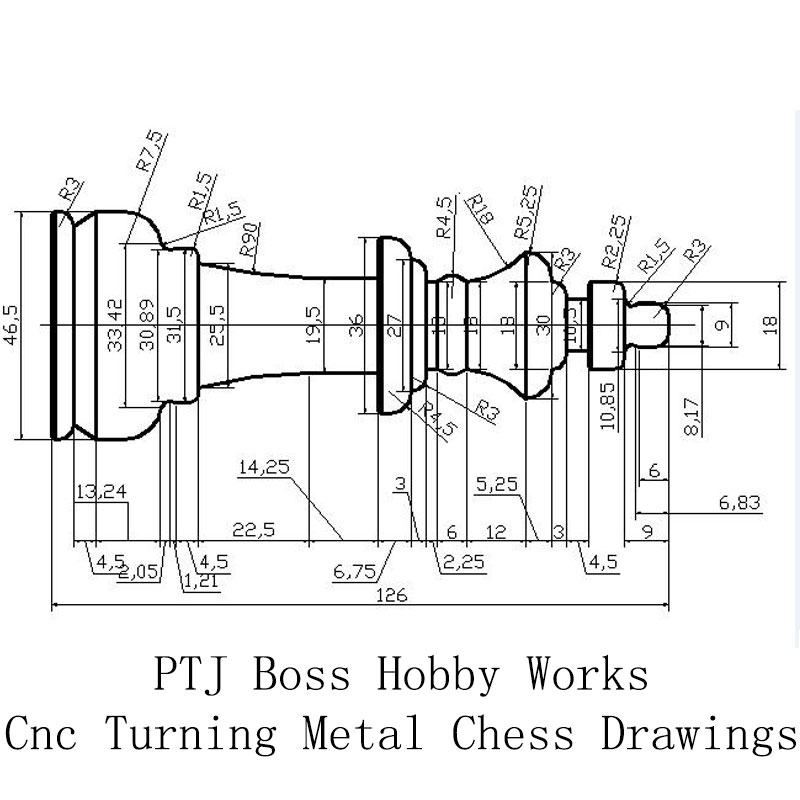In the actual processing, the contour shape of the workpiece to be processed on the CNC lathe is very different. Strictly speaking, in order to meet the requirements of geometric dimensional accuracy, the tool center track should be accurately generated according to the contour shape of the workpiece. For a simple curved CNC system, it is easier Realization, but for more complex shapes, if the direct generation will make the algorithm very complicated, the workload of the computer will also increase correspondingly. Therefore, in practical applications, a small straight line or arc is often used to fit To meet the accuracy requirements (there are also cases where parabolic and higher-order curve fitting is required), this fitting method is “interpolation”, which is essentially the process of data densification.
The task of CNC lathe interpolation is to calculate the coordinate values of several intermediate points between the starting point and the end point of the contour according to the requirements of the feed speed. The time required for the calculation of each intermediate point directly affects the control speed of the system. The calculation accuracy of the point coordinate value also affects the control accuracy of the CNC system. Therefore, the interpolation algorithm is the core of the entire CNC system control.
After decades of development, interpolation algorithms have matured and come in many varieties. Generally speaking, from the generated mathematical model, there are mainly linear interpolation, conic interpolation, etc .; from the numerical form of the interpolation calculation output, there are mainly pulse incremental interpolation (also known as reference pulse interpolation) Complement) and data sampling interpolation. Both pulse incremental interpolation and data sampling interpolation have their own characteristics. In this paper, pulse incremental interpolation and data sampling interpolation are developed respectively according to different applications.
1. Digital integral interpolation
Digital integral interpolation is a type of pulse incremental interpolation. The following will first explain the working principle of pulse incremental interpolation.
2. Pulse incremental interpolation
Pulse incremental interpolation is stroke scalar interpolation, and a stroke increment is generated at the end of each interpolation and output as a pulse. This interpolation algorithm is mainly used in open-loop numerical control systems. In the process of interpolation calculation, it continuously sends coordinated feed pulses to each coordinate axis to drive the motor. The amount of coordinate axis movement generated by a pulse is called the pulse equivalent. The pulse equivalent is the basic unit of pulse distribution. It is selected according to the machining accuracy of the machine tool design. The general precision machine tool generally takes the pulse equivalent: 0.01mm, and the more precise machine tool takes 1 or 0.5. The numerical control system adopting the pulse incremental interpolation algorithm, the feed rate of the coordinate axis is mainly limited by the running time of the interpolation program, which is generally 1 ~ 3m / min.
Pulse incremental interpolation mainly includes point-by-point comparison method and data integration interpolation method. The point-by-point comparison method was originally called the area discrimination method, or algebraic operation method, or drunk step approximation method. The principle of this method is: the computer can calculate and discriminate the processing deviation point by point during the control processing, to control the coordinate feed, process the required workpiece according to the specified figure, and drag it with a stepper motor or electro-hydraulic pulse motor For the machine tool, the feed method is stepping, and the interpolator controls the machine tool. The point-by-point comparison method can realize both linear interpolation and circular interpolation. It is characterized by intuitive operation, the interpolation error is less than one pulse equivalent, the output pulse is uniform, the speed change is small, and the adjustment is convenient. Therefore, the two coordinates Open loop CNC systems are more commonly used. But this method can not realize multi-axis linkage, and its application range is greatly limited.
